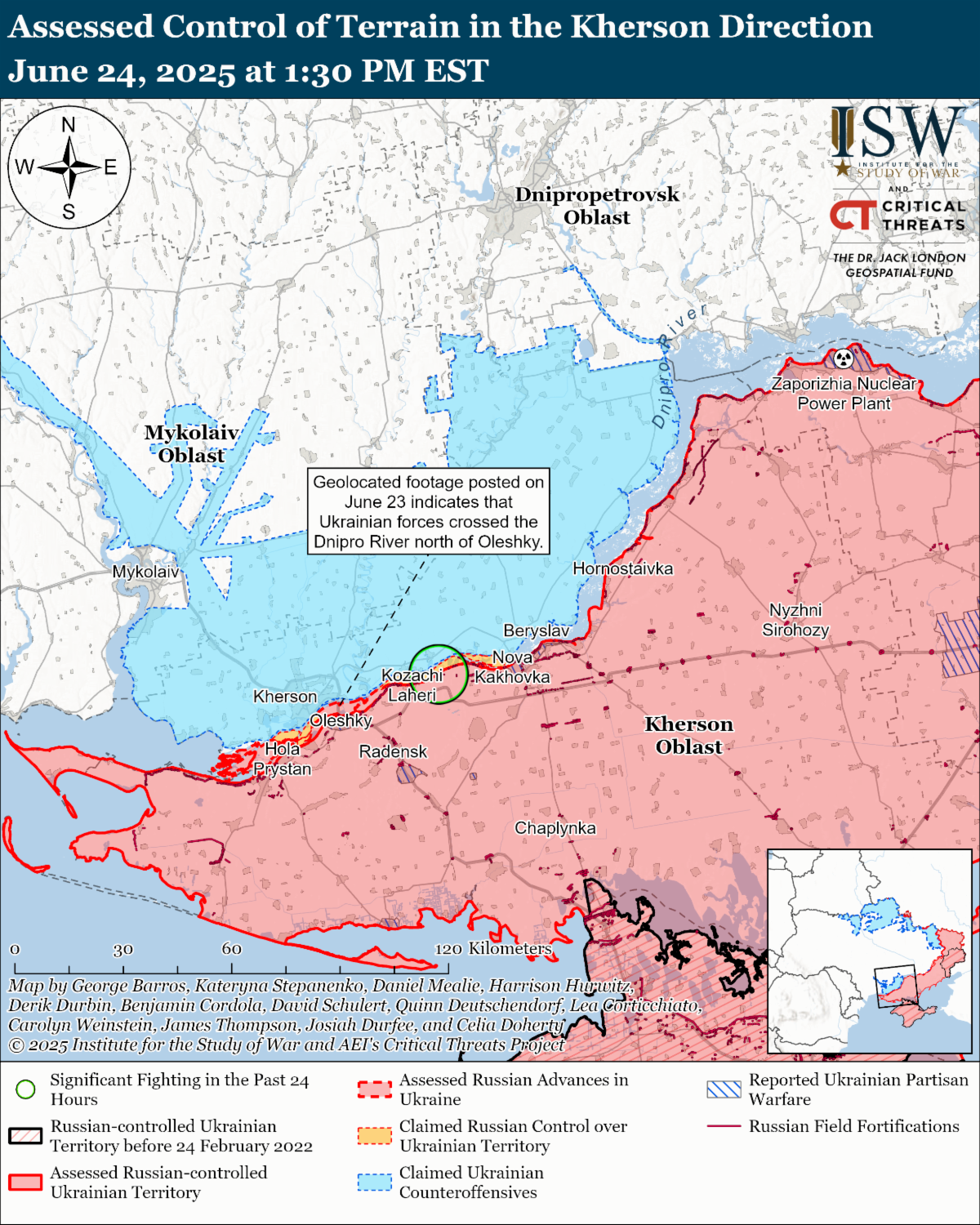NATO General Secretary Mark Rutte assessed that Russia is the largest existential threat to NATO members today and that Russia is preparing for a protracted war with NATO. Rutte stated on June 24 at the NATO summit at The Hague that Russia remains the most significant and direct threat to NATO, especially considering the support North Korea, the People's Republic of China (PRC), Iran, and Belarus provide Russia. Rutte stated that Russia could attack NATO within three to seven years and is currently more prepared for a war than NATO. Ukrainian President Volodymyr Zelensky stated in an interview with Sky News on June 24 that Russia would not be ready to attack NATO in the immediate future but could be ready for a war with NATO by 2030. Zelensky stated that the war in Ukraine is currently constraining Russia's ability to train and reconstitute its forces and that any decrease in aid to Ukraine would benefit Russia. ISW continues to assess that Russia is preparing its military and society for a potential future war with NATO in the medium- to long-term. Any future ceasefire or long-term pause in combat in Ukraine would free up Russian forces for redeployment to Russia's eastern border with NATO and allow Russia to rearm and reconstitute, whereby Russia may be able to pose a significant threat to NATO earlier than 2030.
The Kremlin continues efforts to augment Russian combat power by setting conditions to subsume forces from Russia's Collective Security Treaty Organization (CSTO) allies under a Russian military command. The Russian State Duma ratified on June 24 a protocol that allows CSTO states to send their troops to other CSTO states' territory in the event of armed conflict, threats, crisis situations, and exercises; to respond to the consequences of emergencies; and to provide humanitarian aid. The protocol now allows for the CSTO to transport troops one day after a decision from the CSTO Council — as opposed to after 30 days as the protocol stated previously. The protocol also introduces the concept of a "command of formations" that will command CSTO military forces sent to one CSTO state. This “command of formations” will likely be a Russian-dominated command. The CSTO Collective Security Council approved the protocol in November 2024. ISW has long assessed that the Kremlin has been trying to subordinate the militaries of former Soviet states to the Russian Armed Forces to recreate a multinational combined army in the former Soviet space. Western assessments of Russia's future combat power must take into account the forces of Russia's CSTO allies that Russia may use in future operations — not only those of Russia.
Key Takeaways:
- NATO General Secretary Mark Rutte assessed that Russia is the largest existential threat to NATO members today and that Russia is preparing for a protracted war with NATO.
- The Kremlin continues efforts to augment Russian combat power by setting conditions to subsume forces from Russia's Collective Security Treaty Organization (CSTO) allies under a Russian military command.
- Russian forces are expanding their use of motorcycles along the frontline in Ukraine — a tactic that the Russian military may leverage in future wars beyond Ukraine, possibly including operations against NATO states.
- NATO General Secretary Mark Rutte highlighted NATO's plans to invest more in its own defense capabilities, including by investing in the Ukrainian defense industrial base (DIB) — in line with US President Donald Trump's initiative for Europe to shoulder more of the burden of collective security.
- Ukraine's European partners allocated military aid to Ukraine and financial support for drone production during the NATO summit on June 24.
- Russian forces conducted a series of drone strikes against Ukraine on the night of June 23 to 24 that resulted in over 100 civilian casualties.
- Ukrainian forces recently advanced near Toretsk and Kherson City, and Russian forces recently advanced in northern Sumy Oblast and near Chasiv Yar, Pokrovsk, and Novopavlivka.
| 




 [ISW] 이란 업데이트 특별 보고서, 2025년 6월 24일, 저녁 에디션
[ISW] 이란 업데이트 특별 보고서, 2025년 6월 24일, 저녁 에디션
 [ISW] 이란 업데이트 스페셜 리포트, 2025년 6월 24일, 모닝 에디션
[ISW] 이란 업데이트 스페셜 리포트, 2025년 6월 24일, 모닝 에디션